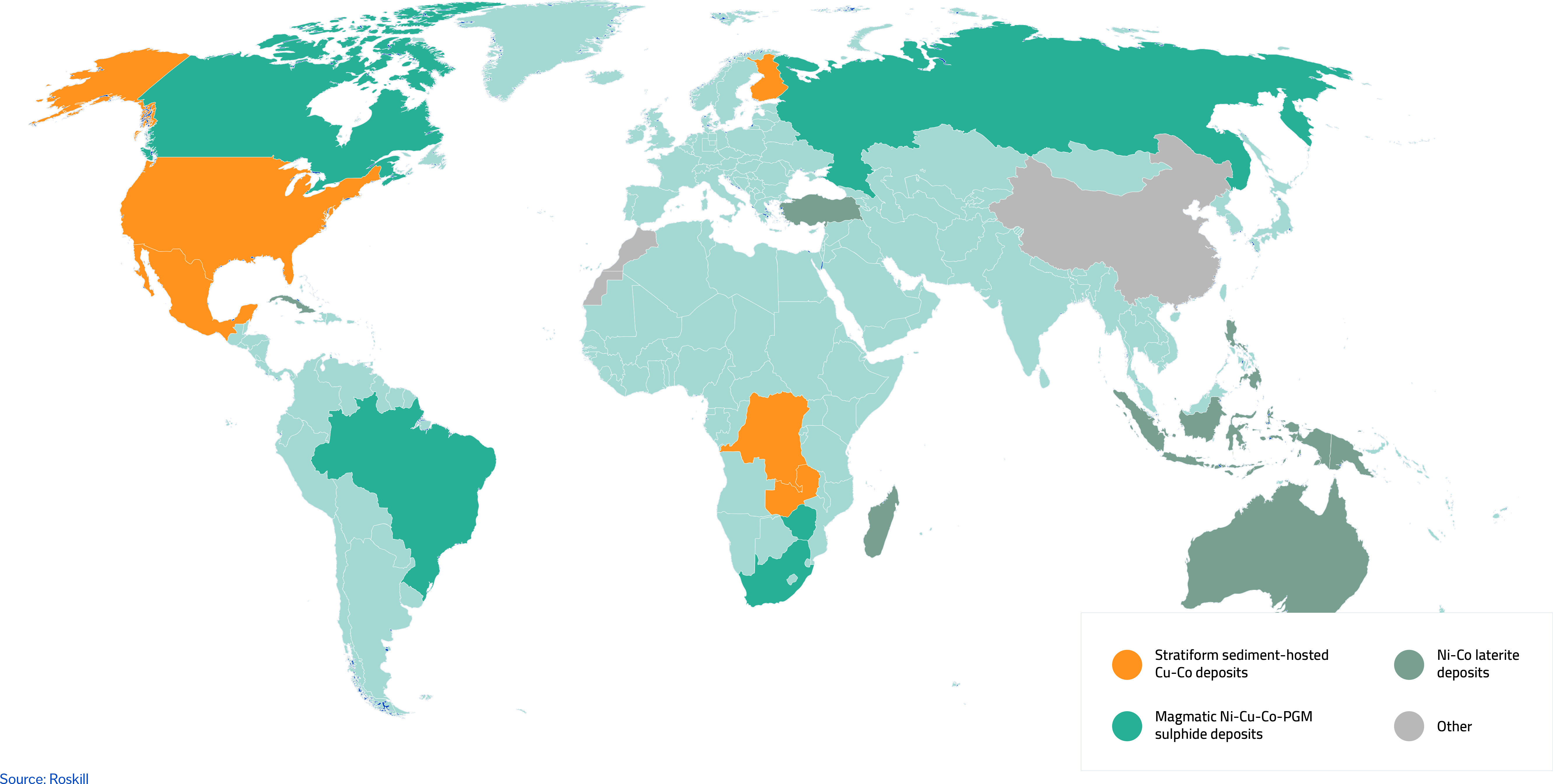Types of Deposits
Economic concentrations of cobalt deposits can be found in five different geological settings.
Cobalt is almost always a by- or co-product of mining for other metals, chiefly nickel and copper or it can be found in cobalt deposits on the sea floor. Large quantities of cobalt also occur on the sea floor, contained within manganese nodules and cobalt-rich crusts, although further research needs to be taken to ensure the viability of this method of extraction.
Sediment Hosted
These deposits are primarily worked for copper with cobalt as a by-product. They account for over 50% of world cobalt mined production. Major deposits are characterized by ore minerals contained within organic-rich pyritic shales and sandstones deposited in a near-shore lagoonal environment, under reducing conditions. These mineralized sediments are always found above oxidized terrestrial clastic sediments.
Sediment-hosted deposits are a vital source of copper, with cobalt as a valuable by-product. Their unique geological characteristics, including the presence of ore minerals in organic-rich sedimentary rocks, make them distinct.
The European Kupferschiefer and the Central African Copperbelt are prominent examples of these deposits, contributing significantly to the global supply of copper and cobalt.
Hydrothermal and Volcanogenic
This deposit type groups together a wide range of deposit styles and mineral assemblages. The key process is precipitation from hydrothermal fluids passing through the host rock often sourced from, or powered by, volcanic activity. Ores can be found where minerals have been remobilised along fault planes, in veins, fissures and cracks, or as metasomatic replacement of host rocks. The specific characteristics of these deposits can vary widely depending on the geological setting and the composition of the host rocks, resulting in a diverse array of mineral assemblages and deposit styles. These deposits are of significant economic importance because they often contain valuable metals and ores used in various industries, including mining and metallurgy.
Magmatic sulphide
The largest and most economically important magmatic sulphide deposits include:
Norilsk, Russia Merensky Reef, South Africa
Kambalda, Western Australia
Sudbury, Canada
Laterite
In tropical and subtropical climates intense weathering of ultramafic rocks may cause significant cobalt and nickel enrichment in surficial residual deposits known as laterites. Cobalt dispersed in silicates and sulphides within the host rock is remobilised and deposited in weathered layers as hydroxides and oxides near the surface and as silicate at deeper levels. These deposits are generally about 20 metres thick and mid-Tertiary to recent in age. They are principally worked for nickel with cobalt as a by-product. The cobalt is contained within limonite and goethite as well as erythrite and asbolite. At deeper levels, weathering of ultramafic rocks is less intense and the nickeliferous mineral garnierite is formed.
Manganese Nodules and Cobalt rich Crusts
On sediment-starved deep ocean floors, generally 4 to 5.5 kilometres deep, concretions rich in manganese, cobalt and nickel can form around small fragments of debris and organic material. The nodules concentrate minerals from siliceous oozes and from the water column. Their occurrence in proximity to mid-ocean ridges suggests a volcanogenic source for mineral enrichment. They may occur as densely packed sheets covering areas of hundreds of square kilometres with cobalt grades in the range of 1 to 2.5 per cent. However, their extraction poses significant environmental challenges and regulatory considerations, as deep-sea ecosystems are fragile and poorly understood.
Cobalt resources by mine producing country and main deposit type, 2020

